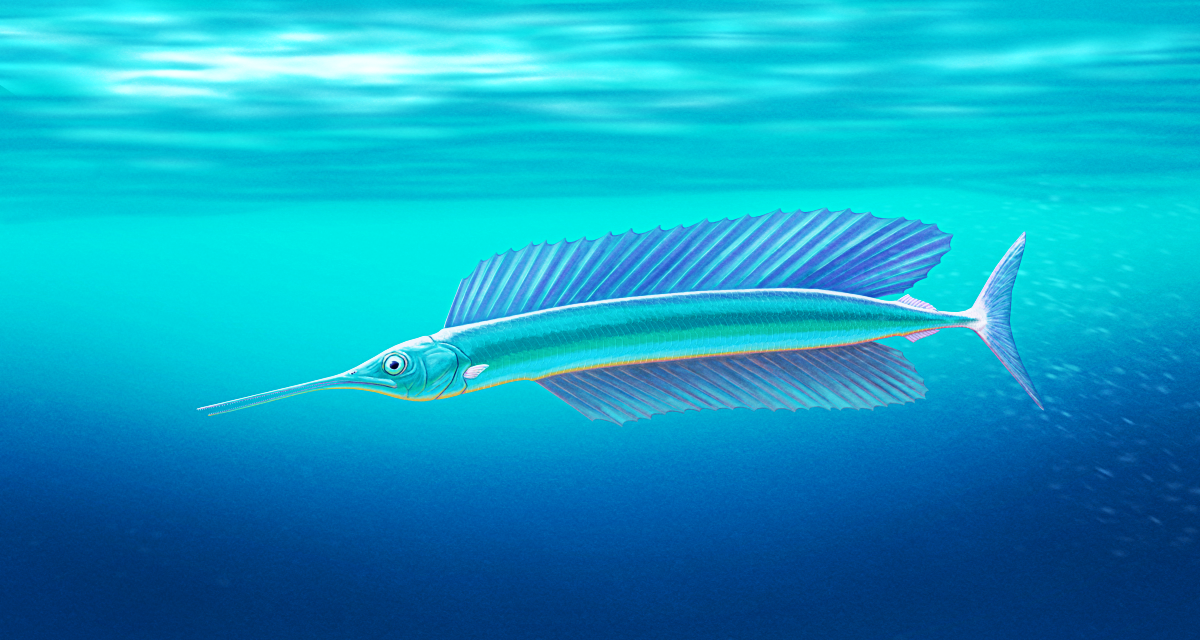Hemingwaya sarissa here was one of the earliest known billfish, related to modern sailfish and marlin. Living during the late Paleocene, about 58 million years ago, it inhabited the area around what is now Turkmenistan, in the warm shallow waters of the western Tethys Sea that covered much of central Asia at the time.
It was rather small compared to its modern relatives, just 30-40cm in length (~1′-1’4″), with a long streamlined body armored with six rows of scutes. Its slender snout was lined with tiny teeth, and both its first dorsal fin and first anal fin were tall and elongated.
It probably wasn’t a very active swimmer, instead hovering near the surface and catching smaller prey with quick bursts of speed.

